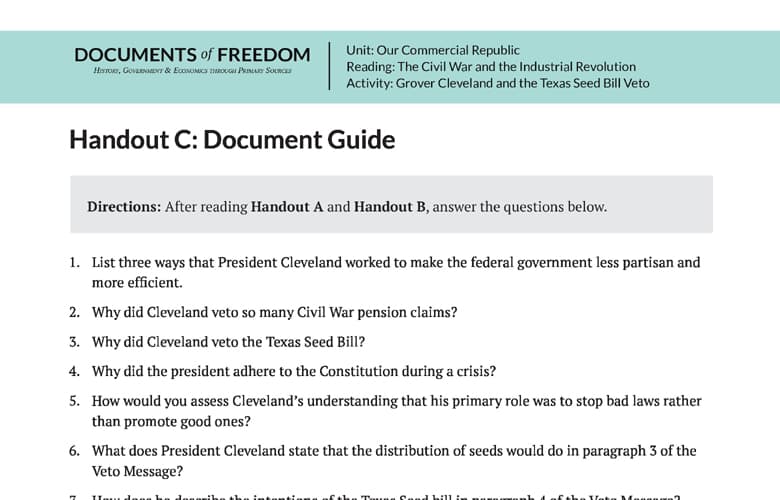Handout C: Document Guide
Handout C: Document Guide
Directions: After reading Handout A and Handout B, answer the questions below.
- List three ways that President Cleveland worked to make the federal government less partisan and more efficient.
- Why did Cleveland veto so many Civil War pension claims?
- Why did Cleveland veto the Texas Seed Bill?
- Why did the president adhere to the Constitution during a crisis?
- How would you assess Cleveland’s understanding that his primary role was to stop bad laws rather than promote good ones?
- What does President Cleveland state that the distribution of seeds would do in paragraph 3 of the Veto Message?
- How does he describe the intentions of the Texas Seed bill in paragraph 4 of the Veto Message?
- What reason does he give for his veto in paragraph 5 of the Veto Message?
- What reason does he give for his veto in paragraph 6 of the Veto Message?
- What does he says he expects from “the people of the country” in paragraph 7 of the Veto Message?
- Why would the president adhere to the Constitution in a crisis?
- When, if ever, should the president set aside limits on the Constitution to relieve human suffering?
- Do you think a bill like the Texas Seed Bill would likely be vetoed today? Why or why not?
- When individuals give money to charity, who decides which charities will receive money? When individuals give money to the government to use for direct assistance, who decides which charities will receive money?
- When government spends the public’s money for direct assistance, how does that change the way individuals experience helping others? Does it harm the “bonds of a common brotherhood” that Cleveland spoke of?
- How would you know if any of Cleveland’s warnings about the “expectation of paternal care on the part of government” government have come true?
